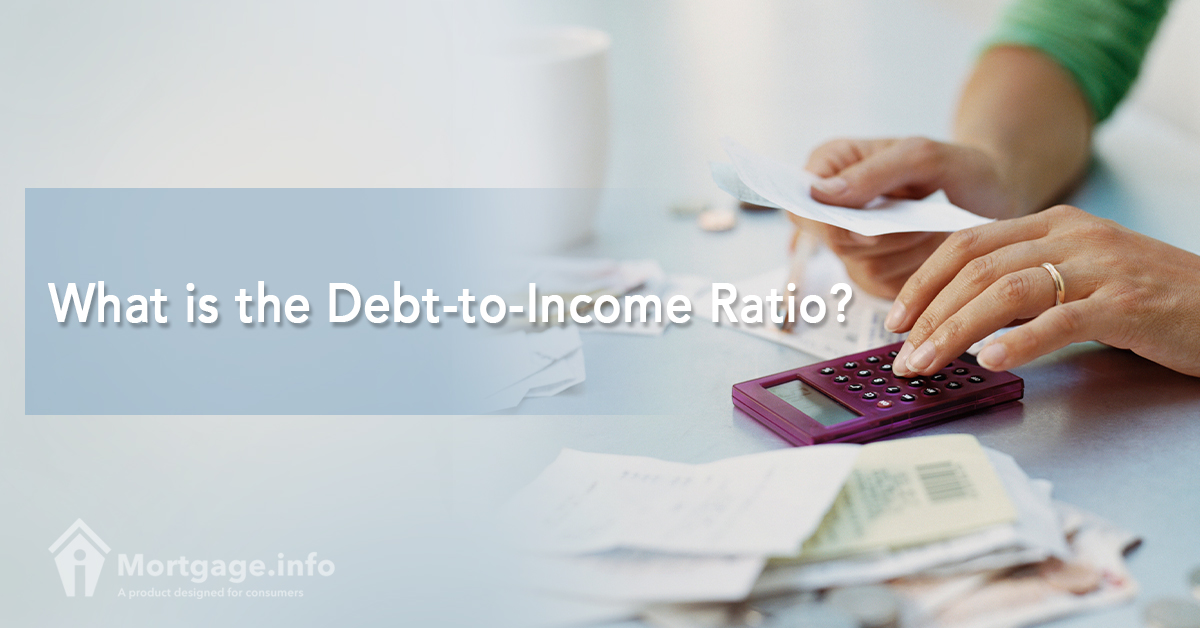
Lenders look at a lot of factors when determining if you are a good candidate for a mortgage. One of the most important factors aside from your credit history is your debt-to-income ratio. This ratio helps the lender understand how much of your monthly income you already committed to other obligations. This ratio is a good way for lenders to determine if you are overextended on your credit.
How to Determine your Debt-to-Income Ratio
Determining your debt-to-income ratio is very simple. Before you can calculate it, though, you need two numbers. First, you need your total monthly income. This is your gross income, or the full amount you get paid before taxes are taken out. Next, you need your total monthly debts. These are the debts that report on your credit report. Think of things like car payments, student loans, and credit card debts. You use the payment that the report shows, which for installment payments is your monthly payment and for credit card debts it is your minimum monthly payment.
Once you have your debts, total up the amount of monthly payments you owe. For example, if you have a $500 car payment, $300 student loan payment, and two credit cards with $25 and $35 minimum payments, your monthly debt load equals $860.
Now that you have all of the numbers you need, you can figure out your DTI. Let’s say your monthly income equals $5,000. $860 equals 17 percent of $5,000. Let’s add in your new potential mortgage payment of $1,200. Your total debt ratio would equal 41 percent.
In fact, lenders look at your front-end and back-end ratio. The front-end ratio is the mortgage payment alone. This includes the principal, interest, taxes, and insurance. In the above example, the front-end ratio equals $1,200/$5,000, which equals 24 percent. The total debt ratio is the combination of all of the debts in addition to the new mortgage payment, which equals the 41 percent from above.
The Measurement that Means the Most
The debt ratio helps lenders understand your risk for defaulting on the new potential mortgage. Borrowers that have a higher DTI, typically close to the national maximum of 43 percent, are more likely to default on their mortgage. The 43 percent ratio signifies the maximum ratio according to the Qualified Mortgage Guidelines, which all conforming loans must follow.
If your debt ratio exceeds 43 percent it does not mean you will not have a loan; it does mean that you will go through some additional scrutiny, however. The lender has to be able to show that they could prove without a doubt that you can afford the new mortgage payment. These guidelines were put into place in order to avoid another housing crisis as happened in the past. They want to make sure that every borrower that takes on a new loan understands what they get and how it will affect their future income.
How you can Lower your DTI
If you run your own DTI and realize that it is way above the normal standards, you are not out of luck. There are things you can do to get your ratio lowered. The easiest way to do so is to pay your debts off. This might take some time, which is why figuring this information out early on in the process can help you. For example, if you have a car payment with less than one year of payments left, see what you can do about paying it off completely before you apply for a mortgage. If you have credit cards, you can also pay them off or even down. Since their minimum payment is variable based on the debt you have outstanding, a lower balance could mean a lower minimum payment which could positively affect your DTI.
It is important to understand every aspect of your loan qualification. If a lender turns you down because of something you do not understand, it might make it difficult to turn around and fix it. A poor credit score is easy to understand and fix, but a high debt-to-income ratio is not something everyone understands. Knowing what it is can help you make yours as attractive as possible before you ever fill out an application with a mortgage lender. This will give you the best chances at approval in the long run.
